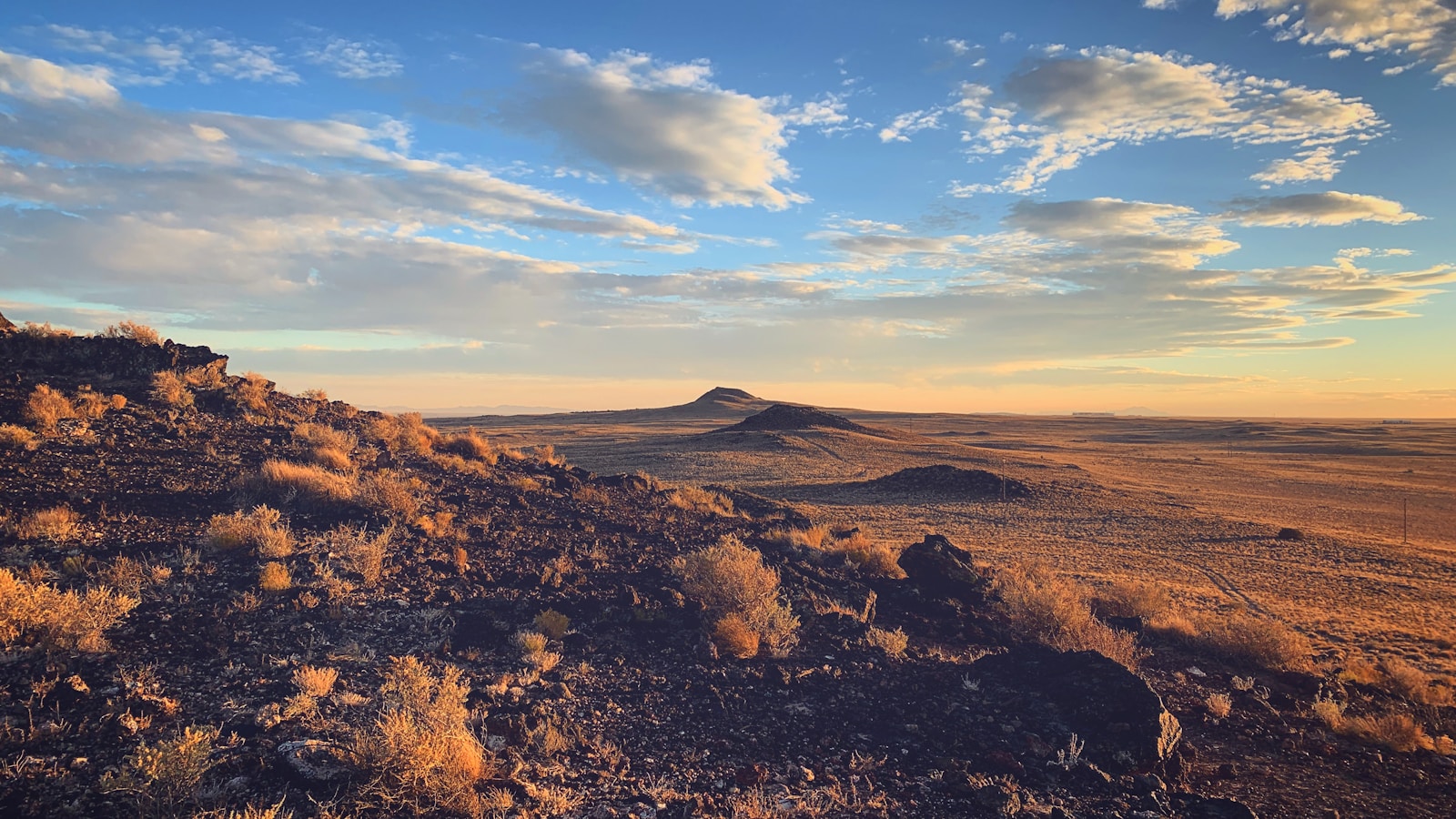
Photograph by Ethan Wright-Magoon via Unsplash
How can we love our neighbor in other people’s spaces?
Jonathan Malone
May 1, 2024
When I lead trips into the wilderness, I offer a “land acknowledgement,” reminding the participants that we are not the first people to walk these lands, that other communities and cultures have lived here and sometimes continue to live here, and that others have been forcibly removed. I offer the land acknowledgement in part to claim an awareness that we are walking in what may be a wilderness for us and yet for others may likely have been a sacred, holy place where a different understanding of the Divine could fully be encountered.
I regularly offer the acknowledgement, but it is not often that I have been forced to confront such sentiment directly.
Recently I was visiting the Petroglyph National Monument in the desert outskirts of Albuquerque, New Mexico. I went to experience the desert, but also to have an opportunity to view petroglyphs that are at least 400 to 700 years old.
I’m not an anthropologist or an archaeologist, so I cannot offer any deep explanation about the carvings. From what I read on the park’s informational signs, current experts are not sure that all of the carvings are religious, but assume that a significant percentage of them are. This suggested that to at least a degree, the space that I was walking through was at one time seen sacred by the Pueblo people. With this in mind, I decided that I would treat all of the carvings as sacred and treat the space as sacred.
I fully recognize that by just going to the monument, walking the trails, and observing the carvings, that I am already transgressing as a tourist/observer. I am participating in a system that has made what was once a part of a culture and a people an oddity and curiosity to view with a voyeuristic sentiment. Perhaps it would be better if I did not participate in the display at all and thus did not support the tourist’s curiosity. On the other hand, if the National Park Service did not create this national monument, the encroaching urban sprawl of Albuquerque would have overtaken the spaces and the carvings, and they would have been lost. As much as I was somewhat uncomfortable with the tourist experience of seeing these reminders of past cultures, I am glad that the minimal space had been set aside and protected.
Still, the question of being a good neighbor lingered. By visiting the park, I was entering into a sacred space and a relationship with people who walked the land centuries before I took my first step. I wrestled with how to be respectful in that relationship.
I decided to not take pictures of the petroglyphs.
What matters is if I can be a good neighbor. What matters is if I can love my neighbor. If I go into someone else’s home or someone else’s place of worship, then as a Christian I believe that it is my duty to show Christ through respect and awareness of what others see as holy.
I wondered what it would feel like if I had belonged to a church and 500 years from now, I saw individuals walking through the tattered remains of that church I grew up in. How would I feel to see them looking at the symbols, the pews, the wood carvings? How would I feel if the people were taking pictures, selfies, and maybe even joking about what they saw? I would not be OK with such a frivolous and disrespectful treatment of a space that was once important to me. Such actions do not honor the history that this is a space where I went to worship, to be in community, to experience the Divine. This is what I found with the petroglyphs.
The least I could do in loving my neighbor is to walk with a sense of solemnity—and not to take any pictures.
I did not take any pictures. I tried to take my time, looking at the carvings, imagining and wondering what stories, beliefs, and truths they were pointing to. I tried to take in the totality of the landscape and put myself into the space of someone walking multiple miles and then taking the time to meticulously etch into rock a marker of a spiritual experience. I wondered about the sense of awe that one would have in the open and stark landscape, the wind, the silence, the heat. I wondered about how one might have experienced the Divine in that time and space. And then I quietly moved on.
The awareness of the presence of others, past and present, can give one a sensitivity of the sacred in respecting the relationships. What I believe matters less than how I can respect what others believe. What matters is if I can be a good neighbor. What matters is if I can love my neighbor. If I go into someone else’s home or someone else’s place of worship, then as a Christian I believe that it is my duty to show Christ through respect and awareness of what others see as holy. In memory or in present experience, this is how we all are called to express love of neighbor. And in loving my neighbor, past and present, I believe I experienced a sense of the Divine.
Jonathan Malone offers hikes and backpacking trips around the country for individuals and organizations to encounter the Divine in the wilderness. His book, “A Peculiar Church,” is published through Judson Press.
The views expressed are those of the author and not necessarily those of American Baptist Home Mission Societies.


